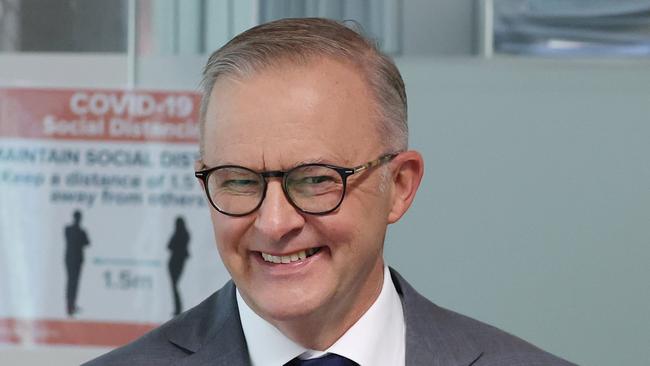
Do you want people to save for their own retirement – or not?
That is the question the Prime Minister and the government should be asked at every turn.
The debate, opened by Jim Chalmers, about the object of superannuation is a reasonable one. It was identified by the Retirement Income Review handed to the previous Coalition government in 2020.
The problem is you suspect that Chalmers, Assistant Treasurer Stephen Jones and Prime Minister Anthony Albanese have already come to their conclusions. The debate is window dressing.
That’s why Jones verbalised $3m as the maximum a person should have in a tax-advantaged superannuation fund.
The other number you should understand is $1.7m. This is the maximum you can have in a super income stream (an annuity style product). It is likely to rise to $1.9m from July 1. The income from these pension-style investments is tax-free.
So, let’s look at someone with the magical $3m that Jones conjured.
Let’s presume $1.9m is put in a super income stream. As I say, income on the fund earnings … and the income you draw down is tax-free. The minimum a person can draw down – between age 65 and 74 – is 2.5 per cent – in this case $47,500 (you can draw down more).
The remaining $1.1m will be in a standard super fund – where the tax on earnings and withdrawals is typically 15 per cent. If that fund earns 7 per cent after tax (a super industry standard) it generates another $65,450 after tax.
For having $3m in super, you have generated $113,000 or so a year in after-tax income. It’s solid, but not a motza. It’s way short of the $300,000 to $400,000 that some politicians and public servants are drawing down from their old-style defined benefits pension funds. If you want fairness, the politicians, judges and politicians in these old-style funds also need to take a haircut. The full age pension for a couple, remember, is now about $40,000 a year.
In this “debate” you must also pay close attention to the language. For all the talk about superannuation caps may be a smokescreen for a couple of things that are way bigger.
The Treasurer and Assistant Treasurer talked about the “purpose of super” … that it should be used to create a “retirement income”.
One of the basic tenets of super – and Chalmers said it this week – is that it’s your money. But does that mean – as it should – that if you reach retirement age … pay the tax … withdraw the lot … and blow it on a party … it’s your right. Stupid, but your right.
If the purpose of super is to create a retirement income, not have parties, then whose money is it really?
This point is critical.
People are now forced to forego 10.5 per cent of their salary (on its way to 12 per cent) to provide for their own retirement, via compulsory superannuation.
Yet the Bureau of Statistics notes that in 2001, 41.4 per cent of people aged between 45 and 54 owned their home outright. In 2021 just 18.5 per cent of people in the same age bracket had no mortgage.
It’s worse in the pre-retirement years of 55 to 64 years old. In 2001, 84.5 per cent of people were mortgage-free. In 2021 it was 64.1 per cent. High house prices – and more income diverted into super – means more people are entering their retirement years in debt.
So if super is forcibly diverted into an income stream, will families have the right to repay their mortgage? That is something the government needs to address.
And what about inheritance?
The Retirement Income Review notes that most people die with the majority of the wealth they had when they retired.
This money is passed to their heirs – spouses or the next generation who in turn pay off their mortgage or fund their own retirement. And isn’t this the objective of superannuation? To allow families to fund their retirements, as free from government, as they possibly can?
You would prefer this, rather than more people falling onto the age pension – the government purse, or worse still, trying to get their timing right so they spend their last penny and drop dead.
Nobody is that good – not even Jim Chalmers.



